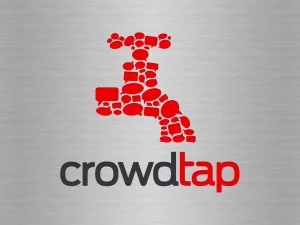Switching jobs feels exciting until you remember that forgotten 401(k) sitting with your previous employer. Sound familiar? You’re not alone here.
Millions of Americans face this exact situation every year. The Employee Benefit Research Institute found that workers change jobs roughly 12 times during their careers. That’s 12 different retirement accounts scattered across various employers.
Here’s what we’ll cover: your four main options for handling that old 401(k), how to evaluate each choice based on your financial situation, the tax implications you need to understand, and when professional advice becomes essential. By the end, you’ll know exactly which path makes sense for your retirement goals.
Options for Managing Your Old 401(k)
Leave it with your former employer
Keeping your 401(k) with your previous employer represents the easiest short-term solution. Many people choose this route simply because it requires zero immediate action.
Your former employer must allow you to maintain the account if your balance exceeds $5,000. However, accounts between $1,000 and $5,000 might get automatically rolled into an IRA chosen by your employer. Balances under $1,000? They’ll likely cash you out entirely.
The downside becomes apparent over time. You can’t make additional contributions to this account anymore. Plus, you’re stuck with whatever investment options your former employer provides. These choices may be limited compared to what is available elsewhere.
Administrative headaches multiply, too. Different login credentials, separate statements, and various customer service numbers create unnecessary complexity. When retirement arrives, managing withdrawals from multiple accounts becomes a logistical nightmare.
Roll over to a new employer’s plan

Moving your old 401(k) into your current employer’s retirement plan streamlines everything into one account. This consolidation makes tracking performance and managing investments much simpler.
Your new employer’s plan might offer better investment choices or lower fees than your previous one. Some plans provide access to institutional-class mutual funds with expense ratios that are significantly lower than those of retail versions.
The employer match sweetens the deal further. While you can’t get matching contributions on rolled-over funds, having everything in one place makes it easier to maximize your current contributions and capture that free money.
However, not all employer plans accept incoming rollovers. Check with your human resources department first. Additionally, your new plan might have fewer investment options than keeping funds in an IRA would provide.
Transfer into an IRA
Rolling your 401(k) into an Individual Retirement Account gives you maximum control and flexibility. IRAs typically offer a wider range of investment options compared to employer plans.
You can choose from thousands of mutual funds, exchange-traded funds, individual stocks, bonds, and other investment vehicles. This variety enables better portfolio diversification and the ability to implement targeted investment strategies.
Traditional and Roth IRA options exist for rollovers. Rolling into a traditional IRA maintains the tax-deferred status of your 401(k) funds. Converting to a Roth IRA requires paying income taxes now but provides tax-free growth and withdrawals in retirement.
The flexibility extends to withdrawal rules as well. IRAs offer more options for penalty-free withdrawals before age 59½ for specific purposes, such as first-time home purchases or higher education expenses.
Investment fees in IRAs can be lower than those in many 401(k) plans, especially if you choose low-cost index funds or work with discount brokers. However, some IRAs charge annual maintenance fees that 401(k) plans don’t have.
Cashing out your 401(k)
Taking a cash distribution seems tempting, especially if you need money immediately. But this option comes with severe financial consequences that make it inadvisable in most situations.
The IRS treats 401(k) withdrawals as ordinary income, meaning you’ll pay your full income tax rate on the entire amount. If you’re under 59½, add a 10% early withdrawal penalty on top of regular income taxes.
Consider this example: withdrawing $20,000 from your 401(k) while in the 22% tax bracket costs you $4,400 in federal taxes plus $2,000 in penalties. That’s $6,400 gone immediately, leaving you with only $13,600.
The long-term cost proves even more devastating. That $20,000 could grow to over $160,000 in 30 years, assuming a 7% annual return. You’re trading $160,000 in future retirement security for $13,600 today.
Assessing Your Options
Analyzing your current financial situation
Your financial circumstances should drive your decision-making process. Begin by evaluating your current income, expenses, debt levels, and the status of your emergency fund.
If you’re struggling with high-interest debt, the temptation to cash out might seem overwhelming. But remember those tax penalties we discussed. Instead, consider if your new employer’s plan offers loan provisions or if an IRA allows penalty-free withdrawals for your specific situation.
Emergency fund adequacy matters, too. If you lack sufficient emergency savings, focus on building that buffer by increasing your current income contributions rather than raiding your retirement funds.
Future financial goals and retirement plans
Think about where you want to be in retirement. Are you planning to retire early? Will you need significant flexibility in your withdrawal strategy? Do you expect to be in a higher or lower tax bracket during retirement?
Early retirement plans favor IRA rollovers due to their more flexible withdrawal rules. Traditional retirement timelines work well with employer plan consolidation, especially if your current plan offers excellent investment options and low fees.
Your expected retirement tax bracket influences Roth conversion decisions. If you anticipate being in a higher tax bracket later, paying taxes now through a Roth conversion could save money long-term.
Importance of diversification and investment choices
The variety of investments directly impacts your ability to build a well-diversified portfolio. Some 401(k) plans offer only a handful of investment options, while others provide dozens of choices across various asset classes.
Review the investment menus of your old plan, new plan, and potential IRA providers. Look beyond just the number of options – examine expense ratios, fund performance history, and how well the available choices allow you to implement your preferred investment strategy.
Geographic diversification matters, too. International funds, emerging market exposure, and alternative investments, such as real estate investment trusts (REITs), may be available through IRAs but not employer plans.
Tax Considerations
Comparing the tax implications of each option
Each option carries distinct tax consequences that compound over time. Leaving funds with your former employer maintains the current tax-deferred status with no immediate tax impact.
Direct rollovers to new employer plans or traditional IRAs also avoid immediate taxation. The key word here is “direct” – having funds transferred directly between institutions rather than receiving a check yourself.
Indirect rollovers create temporary tax complications. If you receive the funds directly, your former employer must withhold 20% for taxes. You then have 60 days to deposit the full original amount (including that withheld 20%) into a new retirement account to avoid taxes and penalties.
Roth conversions trigger immediate tax liability on the converted amount. However, future growth and withdrawals become tax-free. This strategy is most effective when you can pay the conversion taxes using non-retirement funds.
Timing and tax strategy
Market conditions and your personal tax situation influence optimal timing for moves like Roth conversions. Converting during market downturns means paying taxes on temporarily reduced account values.
Income timing matters significantly. Years with lower income – perhaps due to job transitions, sabbaticals, or reduced hours – provide opportunities for tax-efficient Roth conversions.
Consider spreading large conversions across multiple years to avoid pushing yourself into higher tax brackets. A $100,000 conversion might cost less in total taxes if split into $25,000 conversions over four years.
Consulting with Financial Professionals
Importance of professional advice

Complex retirement planning decisions benefit from professional guidance, especially when significant account balances are involved. Financial advisors can model different scenarios and their long-term implications.
Tax advisors become essential for Roth conversion decisions. They can calculate optimal conversion amounts based on your current and projected future tax situations.
Investment professionals help evaluate the quality of investment options across different plan providers. Their expertise in analyzing expense ratios, fund manager track records, and portfolio construction proves invaluable.
How to choose a financial advisor
Look for advisors with relevant credentials, such as Certified Financial Planner (CFP) or Chartered Financial Analyst (CFA) designations. These certifications require extensive education and ongoing professional development.
Fee structure transparency is crucial. Fee-only advisors eliminate conflicts of interest that commission-based advisors might face. Understand precisely how and how much you’ll pay for advice.
Experience with situations similar to yours matters. An advisor who regularly assists individuals with 401(k) rollovers and retirement planning will identify issues and opportunities that generalists might overlook.
Conclusion
Your decision about your old 401(k) can impact decades of retirement security. The “set it and forget it” approach of leaving funds with former employers might seem easy, but it rarely optimizes your long-term financial success.
Most people benefit from consolidating accounts through rollovers to new employer plans or IRAs. The key lies in matching your choice to your specific financial situation, investment preferences, and retirement timeline.
Don’t let indecision cost you money. Account management fees, suboptimal investment choices, and missed opportunities compound over time, resulting in significant financial losses. Take action within a reasonable timeframe, ensuring that it aligns with your broader economic strategy.
ALSO READ: What are the 10 Tips to Help You Boost Your Retirement Savings
FAQs
There is no specific deadline, but former employers may require small balances ($1,000-$5,000) to be transferred into IRAs and cash-out accounts under $1,000.
Generally, no, unless you’re 59½ or older, or your plan allows in-service distributions.
Direct rollovers to traditional IRAs or new employer plans are tax-free. Roth conversions trigger immediate taxes.
Yes, you can divide funds between different rollover destinations or keep some with your former employer.
Unclaimed retirement accounts eventually go to state unclaimed property programs, but you can still claim them later.




